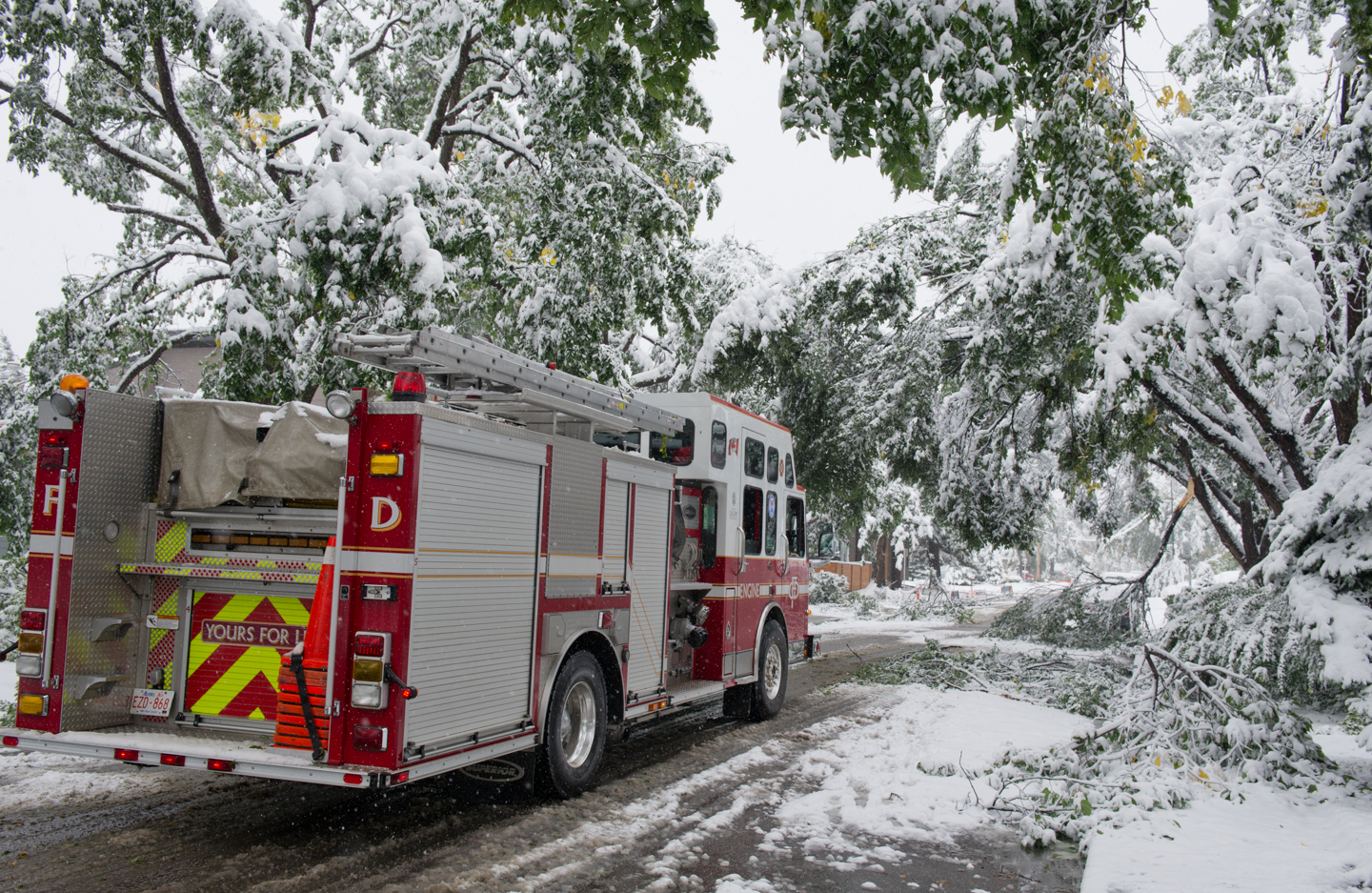What to do during a severe winter storm or extreme cold
Definition – Know the risk
Winter storms can happen quickly and last for several days. Winter storms can include major snowfall, blizzards, blowing snow, freezing rain, ice storms, wind chill, and extreme cold temperatures. These storms can lead to traffic incidents, power outages, hypothermia, frostbite, carbon monoxide poisoning, and more. There are steps you can take to prepare for winter hazards.
How to prepare
- Download the WeatherCAN and Alberta Emergency Alert apps and sign up to receive alerts for your area.
- Prepare your home for winter weather:
- Schedule a professional inspection and cleaning of your furnace to ensure it’s running efficiently.
- Turn off water to exterior faucets and drain your lawn irrigation system.
- Clean your gutters, trim trees and shrubs, and inspect your roof for any damage or loose shingles.
- Ensure your smoke and carbon monoxide detectors are working properly.
- Consider having your chimneys and vents inspected and cleaned to prevent potential fire hazards.
- Seal windows and doors to prevent drafts and ice buildup.
- Put together an emergency kit for your home with essential supplies such as non-perishable food, water, batteries, flashlights, and other items in case of an emergency.
- Create an emergency action plan for your household so your family knows what to do and who to contact in an emergency.
- Review your insurance coverage and understand what is covered under your policy. Contact your provider with any questions.
- Prepare your vehicle for winter weather:
- Make sure to have winter tires installed on your vehicle to ensure good tire traction.
- Check antifreeze levels, battery health, and windshield wipers. Replace worn wiper blades if needed.
What to do during
- Limit time outdoors. If you must go outside, dress in layers and watch for signs of frostbite and hypothermia.
- Avoid or delay travel if possible during severe weather conditions.
- Clear snow and ice from your vehicle and walkways around your home to prevent accidents.
- Avoid overexertion when shoveling or walking in snow to reduce the risk of heart attack.
- If driving in winter weather, let someone know where you’re going, your route, and your expected arrival time.
- Clean snow and ice off your vehicle and ensure your headlights and windows are clear.
- Drive slowly and leave extra distance between your vehicle and other vehicles.
- Check road conditions before driving by visiting Alberta 511.
- Make sure you have a well-stocked Vehicle Emergency Kit with essential supplies in case of unexpected delays.
Know what to do after
- Following snowfall, keep walkways free of ice and snow to ensure the safety of pedestrians.
- Clear snow away from furnace and exhaust vents.
- Check on neighbours, friends and family members.
Related links


